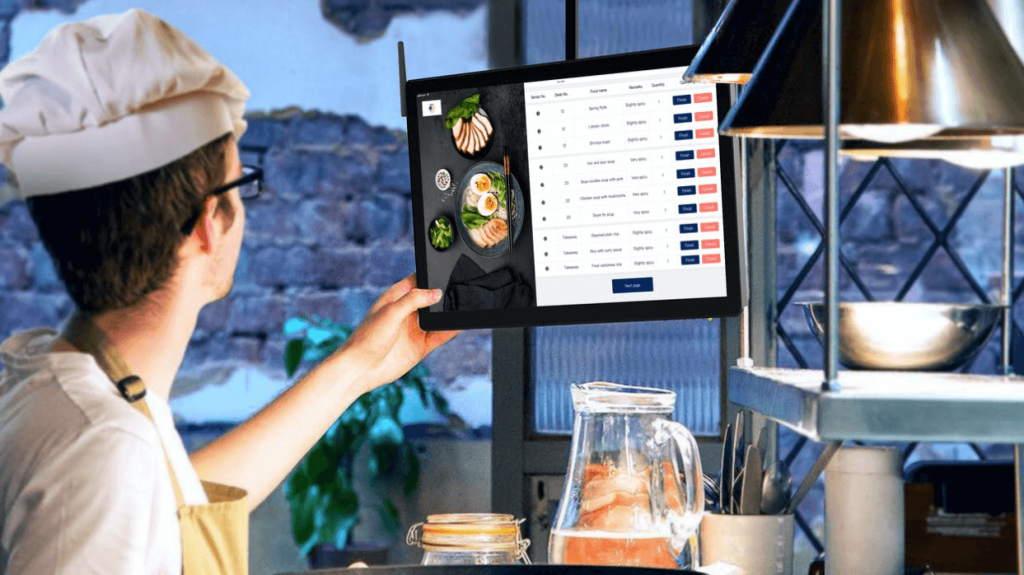As we enter 2024, the restaurant industry continues to evolve, with technology playing a pivotal role in shaping its future. The Point of Sale (POS) system is central to this technological revolution, a crucial tool that has gone beyond mere transaction processing to become a core aspect of restaurant management. This article delves into the importance of embracing advanced POS equipment and software, guiding restaurateurs on the latest trends and choices in this domain.
Importance of Restaurant Technology
In an era where efficiency, customer experience, and data-driven decisions are essential, the importance of advanced restaurant technology cannot be overstated. POS systems have become the nerve center of restaurant operations, facilitating everything from order taking and payment processing to inventory management and customer relationship management. Investing in the right POS equipment and software streamlines operations and enhances the dining experience, ultimately contributing to increased profitability.
Difference between Restaurant Hardware and Software
Understanding the distinction between POS hardware and software is crucial for restaurateurs. POS hardware refers to the physical components like terminals, cash drawers, receipt printers, and card readers. On the other hand, POS software is the application that runs on this hardware, enabling various functionalities such as sales tracking, inventory management, and customer data analysis. While hardware sets the foundation, the software brings intelligence to the operations, making the combination of both imperative for a successful restaurant setup.
Revolutionizing Restaurant Management: Key Software and Hardware Innovations
1. Touchscreen Terminals:
Touchscreen terminals are the cornerstone of modern customised POS systems. They offer an intuitive interface that speeds up order processing and payment handling. With customizable menus and real-time sales reporting, these terminals simplify day-to-day operations and enhance staff efficiency. Their user-friendly nature makes training new staff easier, ensuring a smoother operation flow.
2. Tablets for Ordering and Payment:
Tablets have transformed the dining experience by streamlining the ordering and payment process. Servers can take orders directly at the table, reducing errors and saving time. For customers, the convenience of viewing menus, placing orders, and paying from their seats significantly enhances their dining experience, leading to higher satisfaction and repeat business.
3. Self-Service Kiosk:
Self-service kiosks empower customers by giving them control over their ordering process. Ideal for quick-service restaurants, these kiosks reduce wait times, improve order accuracy, and can even boost sales through suggestive selling. They also help manage high customer volumes effectively, making them a valuable addition to any fast-paced restaurant environment.
4. Kitchen Display System (KDS):
A Kitchen Display System modernizes kitchen operations by replacing traditional paper tickets with digital displays. It streamlines communication between the front-of-house and kitchen staff, improves order accuracy, and enhances the overall speed of service. KDS systems also provide real-time data that can be used to optimize kitchen efficiency and manage food inventory effectively.
5. Credit Card Reader:
A reliable credit card reader is indispensable in an era where cashless transactions are the norm. Modern readers are equipped to handle various forms of payments, including contactless and mobile payments, ensuring convenience for customers. This POS equipment speeds up the checkout process and enhances transaction security.
6. Receipt Printer:
Physical receipts remain crucial to customer service despite the digital shift. Modern receipt printers are fast and efficient and can often be integrated directly with your POS system. They play an essential role in transaction management, offering customers a tangible record of their purchase, which is necessary for returns, exchanges, or service feedback.
7. Waiter Calling System:
This innovative system enhances communication between customers and staff. With the press of a button, diners can call a waiter to their table, request service, or ask for a bill, significantly improving the dining experience. This system streamlines service, reduces wait times, and enables staff to respond more promptly to customer needs.
8. Mobile Android POS:
Mobile POS systems offer unparalleled flexibility and mobility. Android-based POS systems are cost-effective and easily adaptable to various restaurant sizes and styles. They allow orders and payments to be processed tableside, improve customer engagement, and provide valuable insights through integrated analytics features. This mobile solution is ideal for restaurants looking to modernize their service and enhance operational efficiency.
How to Choose Your Restaurant Software
Selecting the right POS software requires careful consideration. Assess the software’s compatibility with your existing hardware and its ability to integrate with other tools like CRM systems or third-party delivery platforms. User-friendliness is critical – the software should be intuitive for your staff and customers. Scalability is another crucial factor; your POS software should adapt as your business grows. Lastly, ensure robust customer support from the software provider, as this technology is central to your day-to-day operations.
Conclusion
The future of restaurant technology, particularly POS systems, is an exciting realm filled with opportunities for growth and efficiency. As we move into 2024, investing in advanced POS equipment and software is not just a luxury but a necessity for staying competitive. By choosing the right technology, restaurateurs can simplify their operations and enhance the customer experience, setting the stage for a successful and tech-savvy future in the hospitality industry.
You may also like
-
Classified Websites in India: A Digital Marketplace for All
-
Why Sod Installation is the Quickest Way to a Beautiful Lawn?
-
The Role of Statutes and Case Law in Policy Limit Access
-
Setting Up a Home Theater with LG CineBeam Q The Ultimate Guide
-
Business Listing Sites in USA: 2025 Guide for Better Online Visibility

